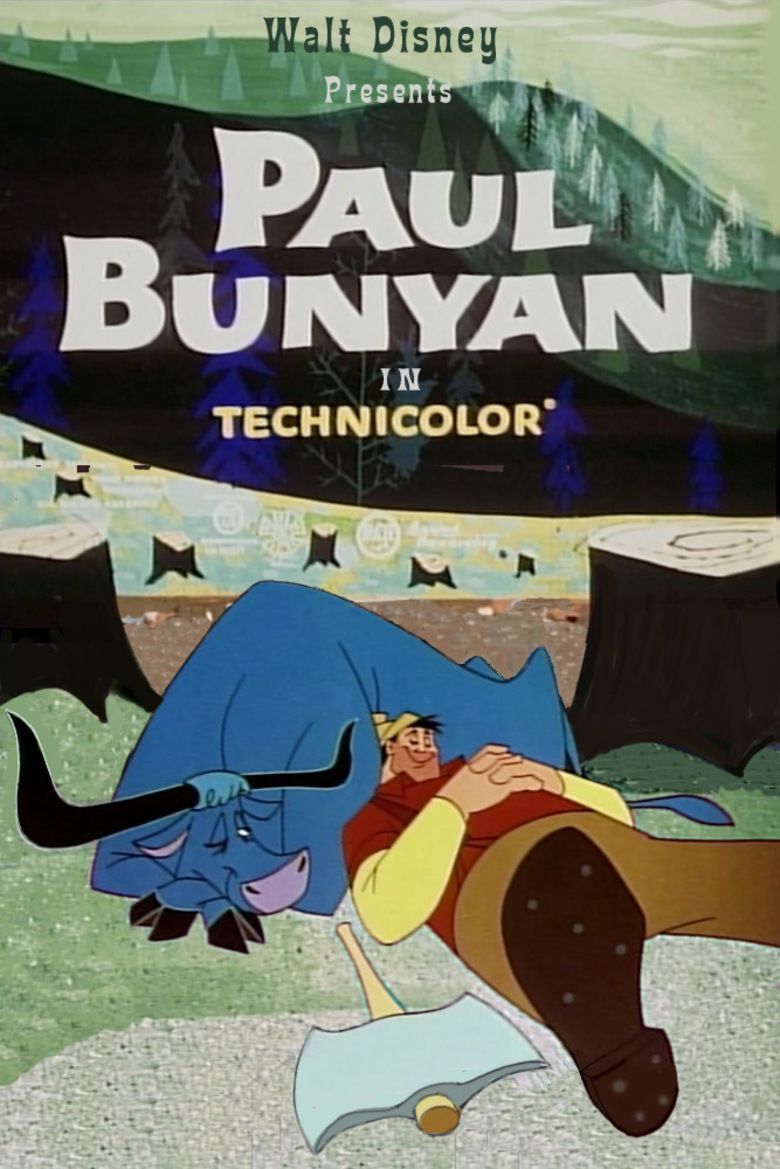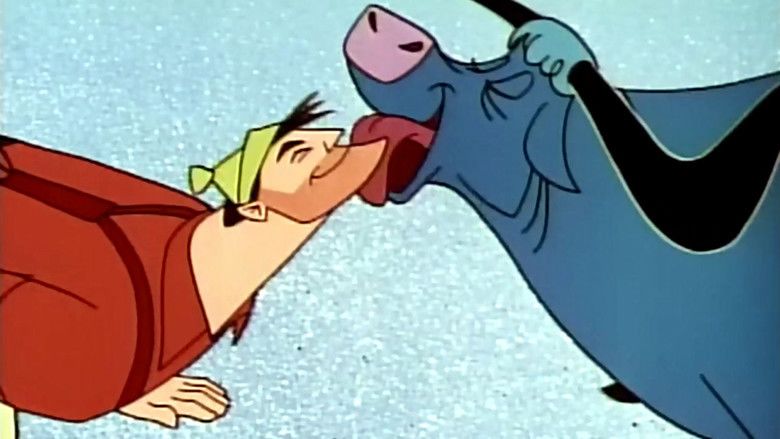Paul Bunyan (film)
7.2 /10 1 Votes
Duration | 7/10 IMDb Genre Animation, Short, Adventure Country United States | |||||||||||||||||||||||||||||||||
 | ||||||||||||||||||||||||||||||||||
Cast (Paul Bunyan / Chorus (voice) (as The Mellomen)), The Mellomen (Chorus (voice)), Max Smith (Chorus (voice) (as The Mellomen)), Bob Stevens (Chorus (voice) (as The Mellomen)), (Chris Crosshaul / Prologue Narrator (voice)), Dal McKennon (Cal McNab (voice))Release date August 1, 1958 (1958-08-01) Similar movies Alpine Climbers , Hawaiian Holiday , Mickey's Polo Team , Mickey's Grand Opera , Mickey and the Beanstalk , Clock Cleaners | ||||||||||||||||||||||||||||||||||
Paul Bunyan is a 1958 animated musical short film released by Walt Disney Studios It was based on the North American folk hero and lumberjack Paul Bunyan. The film was directed by Les Clark, a member of Disney's Nine Old Men of core animators. Thurl Ravenscroft starred as the voice of Paul Bunyan. Supporting animators on the project included Lee Hartman.
Contents

Paul Bunyan received an Academy Award nomination for Best Animated Short in 1959, but lost to Warner Bros. Cartoons' Looney Tunes cartoon Knighty Knight Bugs. It was also included on the 2002 DVD release Disney's American Legends
Plot
Following a violent windstorm on the coast of Maine, lumberjack Cal McNab spots a giant cradle on the beach containing a giant baby boy. The town adopts and raises the boy, giving him the name Paul Bunyan. One Christmas, the town gives Paul a double-bladed axe to help chop down timber. Paul's work clears open land and allows for the town's expansion of buildings. Unfortunately, Paul is too big for it and decides to move out west.
Paul continues to help clear land for farmers in the midwest. During a cold blizzard, Paul rescues a giant ox that has instantly become frozen, turning blue from the cold. Paul adopts the ox and names him Babe. During the following spring, Paul and Babe's footprints through the snow filled up with water and became known as the "Land of 10,000 Lakes." Paul eventually clears the trees from North Dakota and South Dakota, digs the Missouri River to flow the logs downstream to the sawmills, and builds Pike's Peak as a lookout. He creates the Grand Tetons while playing rough with Babe, and makes Yellowstone Falls as a shower bath.
Paul's work creates the career of logging, in which ordinary men follow suit with their axes. However, soon a slick-talking salesman named Joe Muffaw encourages the loggers to forget that work and "be modern" by using gas-powered chainsaws and a steam train to transport the timber (up until this point Babe would carry the timber to market on his back). Paul protests that nothing can replace the heart and soul of himself and Babe, and the men decide to host a tournament with only one rule, whomever creates the highest pile of lumber at the end of one's day work will be declared the superior logger, and the men will adopt the ways of the winner. Paul and Joe work tirelessly throughout the tournament, with Babe furiously racing against the steam train. When time is up, the referee measures Paul Bunyan's pile as 240 feet, and the men cheer. The referee then measures Joe's pile as 240 feet...and one quarter inch. Although most of the men don't think that quarter of an inch was a big deal, the rule was whomever made the highest pile, thus Joe wins. Paul and Babe despondently walk off into the sunset, never to return, but one of the men decides to record the legend of Paul Bunyan and Babe for posterity's sake. Some say they went up to Alaska, and their playful wrestling is what causes the Aurora Borealis in the night sky.
Cast and crew
References
Paul Bunyan (film) WikipediaPaul Bunyan (film) IMDb Paul Bunyan (film) themoviedb.org
